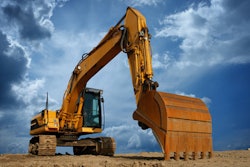
The lumber and buildings materials (LBM) industry is positioned to leverage technology in creative and practical ways that not only make business processes easier to manage, but also help boost top and bottom lines. With technology in their corner, LBM dealers can turn lost time managing data in multiple systems into a singular, streamlined and cohesive investment that expands sales opportunities by modernizing old static offers with dynamic promotions, loyalty programs, item merchandising, and in-house marketing and design services.
It’s a common misconception that technology solutions are too expensive for small- and medium-sized businesses (SMBs), and the truth indicates it’s bad business to NOT explore further digitalization and foundational technology investments. Imagine the flexibility that comes with current technology. Typically, LBM dealers are stuck in their stores after hours getting caught up on tasks that must be finished before the next day, relying upon business processes based on 20-to-30-year-old software. With better technology solutions in place, they can complete tasks and monitor the business from any place that has an internet connection. This flexibility means dealers can drive home, have dinner with their family and get online to continue working. The ability to have integrated solutions that allow dealers to receive alerts and manage the work without paper reporting and physical oversight is empowering like never before.
From e-commerce and inventory management to business and machine intelligence and sales forecasting, technology is driving positive change in the industry. The ability to adapt and embrace technology will be instrumental to success in the LBM industry. By staying at the forefront, SMBs can unlock potential and meet the evolving needs of their managers, staff, customers and vendors in a way that’s more efficient, more effective and more profitable.
E-commerce
In today's rapidly evolving e-commerce landscape, the modern customer's expectations are continually changing, and businesses, especially SMBs, must adapt to meet these demands. The concept of an "endless aisle" has become increasingly important. This idea involves providing customers with an extensive array of products and services online, essentially extending their in-person shopping experience without imposing an additional workload on businesses.
Technology plays a pivotal role in bridging the gap between customer expectations and the capabilities of websites. Integrating enterprise resource planning (ERP) and e-commerce software solutions provides a harmonious blend of resources. This integration empowers consumers and tradespeople to shop online or in-store for delivery or pickup, explore products, manage accounts, create self-service quotes, pay invoices and much more.
For businesses in the LBM and hardlines sectors, these technologies are a game-changer. They bring dealers closer to achieving an "endless aisle" capability, enabling them to compete on a more level playing field with retail giants such as Amazon, big box retailers and other larger competitors. As the online shopping landscape continues to evolve, businesses that embrace integrated e-commerce solutions are better positioned to meet the diverse needs of today's customers and remain competitive in a dynamic market.
Inventory Management
Efficient inventory management has always been a critical aspect of our industry, and technology has brought about substantial improvements in this area. Traditional inventory management systems often relied on manual tracking and human judgment, which frequently has resulted in inaccuracies and inefficiencies. However, modern technology has introduced sophisticated inventory management software that enables real-time tracking, demand forecasting and optimization of stock levels.
Effective inventory management is crucial for minimizing waste, reducing carrying costs and ensuring that the right products are available when customers need them. Innovative solutions, such as RFID tagging, barcoding and cloud-based inventory systems, have significantly improved the accuracy and efficiency of tracking materials and products.
Business Intelligence & Performance Visibility
In today's data-driven world, access to accurate and timely information is paramount for making informed decisions. Business intelligence (BI) tools have become invaluable in the LBM industry, providing comprehensive insights into operations, customer behavior and market trends. These tools enable stakeholders to analyze historical data, predict future trends and optimize business processes.
With the integration of BI solutions, LBM companies can enhance their performance visibility. Having a clear understanding of performance metrics is essential for identifying improvement areas and making strategic decisions. BI tools empower organizations to track key performance indicators (KPIs), monitor sales and identify opportunities for growth. With real-time alerts, these businesses are able to define and be aware of critical activities that determine success with minimal downfall. This data-driven approach fosters agility and adaptability in an ever-evolving market.
Machine Intelligence
Machine intelligence, including artificial intelligence (AI) and machine learning (ML), has found extensive applications in the LBM industry. These technologies enable automation, predictive analytics and enhanced decision-making capabilities. In manufacturing, AI-powered robots can perform repetitive and labor-intensive tasks with precision and speed, reducing the risk of errors and injuries.
AI and ML algorithms are also used for demand forecasting and predicting market trends. By analyzing vast datasets, these technologies can provide valuable insights into consumer preferences and behavior, allowing businesses to tailor their offerings more effectively. AI and ML are instrumental in optimizing supply chain operations, improving customer experiences and driving innovation.
Sales and Financial Forecasting
Sales and financial forecasting are vital cornerstones of any business's success, and the LBM industry is no exception. In the past, forecasting predominantly leaned on historical data and qualitative analysis, a method that was prone to inaccuracies and the oversight of lucrative opportunities. However, the advent of technology has ushered in a significant transformation in this regard by introducing predictive analytics and data-driven forecasting models.
The need for accurate forecasts cannot be overstated in the LBM industry. Reliable predictions are indispensable for efficient resource allocation and effective risk management. Modern forecasting tools harness a combination of historical sales data, in-depth market analysis and the inclusion of external factors to generate forecasts that are considerably more precise. These forecasts empower LBM businesses to fine-tune their inventory levels, implement well-informed pricing strategies and enhance their overall financial planning.
Looking Ahead
LBM and hardlines businesses have long been a cornerstone of modern civilization, providing the essential materials and tools necessary for construction, infrastructure development and countless other aspects of daily life. As the digital era continues to disrupt traditional sectors, the LBM and hardlines industry stands at the forefront of harnessing innovation to enhance the quality of life for individuals and business.
Cutting-edge advancements in e-commerce, inventory management, business intelligence, machine intelligence, and sales and financial forecasting are reshaping the LBM landscape and placing a new focus on sustainability, efficiency and improved consumer experiences. Technology has helped push the LBM industry to evolve, and there’s more room to grow with advanced technology if SMBs will give it a chance.


















